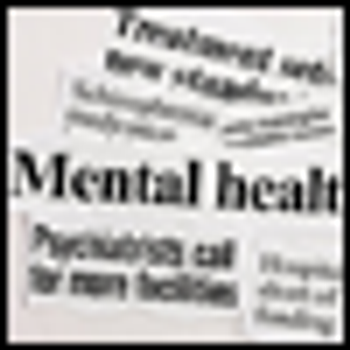
My experience indicates that the SVP laws are being implemented in a highly arbitrary and idiosyncratic fashion with judges and juries easily confused by misleading expert testimony.

My experience indicates that the SVP laws are being implemented in a highly arbitrary and idiosyncratic fashion with judges and juries easily confused by misleading expert testimony.

Adequate treatment of the underlying psychiatric illness consistently appears to be the most effective use of medication in suicidal patients.

Several studies have been undertaken to test the efficacy of drugs in the management of aggression and hostility in patients with schizophrenia and other mood disorders.

Agitated patients who display “excessive verbal and/or motor behavior”-can be loud, disruptive, hostile, sarcastic, threatening, hyperactive, and even combative. This article discusses new best practices and guidelines for agitation.

This discussion focuses on approaches to improve medication adherence, particularly in reference to helping adolescents remain on recommended psychopharmacological regimens when transitioning from acute to long-term maintenance.

Here we list important points to keep in mind when assessing and treating patients who self harm.

During their time in Ayacucho, these visiting psychiatrists learned that American psychiatric training has wide-reaching cultural value.

Psychiatrists cannot, with impunity, disregard an important domain of man’s personality makeup. He ought to remain a searcher of the soul at large.

Three twin studies published between 1977 and 1995, which provided the main body of knowledge on heritability of autism, showed a concordance rate of 72% for a total of 36 monozygotic pairs and a concordance rate of 0% for 30 dizygotic pairs.

In this article the topic addressed are the primary reasons for the American public’s disenchantment with psychiatry; how the profession ought to address these issues; and how we need to replace the DSM’s categorical system with one that is clinically useful for both clinicians and patients.

Dogs, indeed, may be man’s (and woman’s) best therapist at certain times and in certain situations, with important implications for mental health.

Effective, early intervention and appropriate support for and treatment of the caregivers of these vulnerable children will improve short-term outcomes and also may provide positive lifelong benefits.

Knowing from the start how a personality is organized, especially as theorized by Karen Horney-appreciating the primary and repressed moves of the patient, inner dictates, claims, idealized image, and intrapsychic defensive maneuvers-makes the help we offer most likely to succeed.

Although the adverse-effect profile of older, conventional (typical) antipsychotics has discouraged many clinicians from using them, they remain widely used in elderly patients with dementia.

Studies of mammalian species suggest that they possess awareness of self and even more subtle “human” qualities associated with empathy and social joy.

The first half of the 20th century saw 2 world wars, indiscriminate aerial bombing of civilians, the dropping of the atomic bomb, and the Holocaust-all of which created intense trauma for soldiers and civilians.Yet it was not until the American intervention in a post-colonial civil war in Southeast Asia that the psychiatric community in the 1970s formally described what we now call PTSD.

Charles Dickens might well say of American psychiatry, “These are the best of times and the worst of times.”

Suicide continues to be the third leading cause of death in youths aged 10 and older. Several new studies shed further light on suicidal behavior in children and adolescents.

Schizophrenia is often characterized by lack of insight, treatment nonadherence, and poor prognosis. However, research suggests that patients with schizophrenia benefit immensely from learning about their illness.

Project GREAT efforts in psychoeducation are geared toward educating providers about recovery so that they can, in turn, transform their own practices to be in concert with the recovery model.

In this guest blog, Dr Deirdre D'Orazio responds to a recent commentary by Dr Allen Frances on conducting evaluations of potential sexually violent predators.

Dr Angell and others may be right to claim that we should be concerned about the current practice of psychiatry. But the simple fact that mental illnesses seem to be common is not one of them.

Special Report chairs discuss patient education and provide a brief overview of materials that provide an opportunity for patients to help themselves.

While research suggests that cannabis use can induce an acute psychotic state, there is controversy about whether it may precipitate psychotic disorders, such as schizophrenia. These authors offer an update on this important issue and provide clinically useful recommendations.

Through patient self-management, mental health clinicians can transfer the focus from managing symptoms to allowing patients to live well in the context of their mental illness and medical comorbidities.